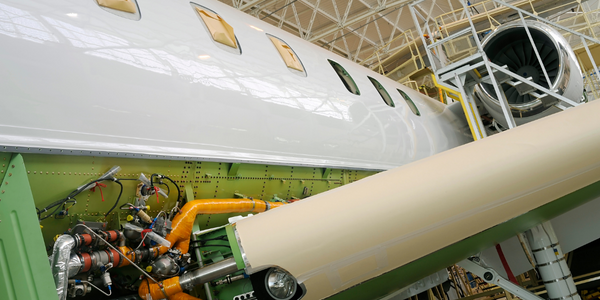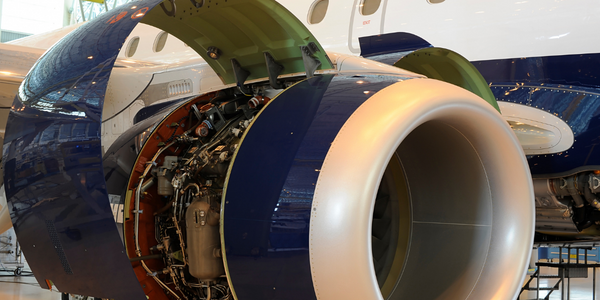Customer Company Size
Large Corporate
Region
- Europe
Country
- Japan
- Netherlands
Product
- COMSOL Multiphysics®
- SpicA Far-InfraRed Instrument (SAFARI)
- Japanese Space Infrared Telescope for Cosmology and Astrophysics (SPICA)
Tech Stack
- Multiphysics Simulation
- Voice-Coil Actuator
- Parametric Sweep
Implementation Scale
- Enterprise-wide Deployment
Impact Metrics
- Innovation Output
- Digital Expertise
- Productivity Improvements
Technology Category
- Analytics & Modeling - Digital Twin / Simulation
- Analytics & Modeling - Predictive Analytics
- Functional Applications - Remote Monitoring & Control Systems
Applicable Industries
- Aerospace
- National Security & Defense
Applicable Functions
- Product Research & Development
- Quality Assurance
Use Cases
- Predictive Maintenance
- Digital Twin
- Remote Asset Management
Services
- Software Design & Engineering Services
- System Integration
About The Customer
SRON Netherlands Institute for Space Research is a leading institute in the field of space research, focusing on the development and application of innovative technologies for space missions. The institute is known for its expertise in designing and optimizing sensitive detectors and calibration systems for space telescopes. SRON's engineering team is dedicated to overcoming the challenges of heat management in cryogenic systems, which are essential for detecting thermal radiation in outer space. The institute collaborates with international partners, such as the Japanese Space Infrared Telescope for Cosmology and Astrophysics (SPICA), to push the boundaries of space exploration and uncover new mysteries of the universe. With a strong emphasis on research and development, SRON aims to contribute to the advancement of space science and technology.
The Challenge
Observing and analyzing regions in outer space where new stars and planets are born requires extremely sensitive detectors. Radiation and overheating can cause these detectors to fail. Using multiphysics simulation, a team at SRON is developing a calibration source for an imaging spectrometer that can operate with such vulnerable equipment. Heat management takes on a unique role in outer space, especially for cryogenic systems that demand extremely low temperatures in order to detect thermal radiation. This was a challenge faced by the engineering team at SRON Netherlands Institute for Space Research when designing the SpicA Far-InfraRed Instrument (SAFARI), an infrared camera that measures the complete far-infrared spectrum for each image pixel. SAFARI will fly aboard the Japanese Space Infrared Telescope for Cosmology and Astrophysics (SPICA). SPICA will look deeper into space than any space telescope has before. Because SAFARI has ultrasensitive detectors, cooled to slightly above absolute zero, it can pick up weaker far-infrared radiation than previous space cameras. Precise on-ground and in-space calibration is crucial to the accuracy of the sensors and the success of the mission. To design and optimize these calibration systems, the team at SRON turned to a COMSOL Multiphysics® simulation as their guide.
The Solution
The calibration source for SAFARI contains a blackbody cavity or radiation source that provides radiation with a spectrum depending only on the source temperature, making it a very reliable and accurate calibrator. However, SAFARI’s detectors are so sensitive that the power produced by the source is approximately a million times too high and must be optically diluted using apertures and an integrating sphere. After passing through the integrating sphere, radiation with the correct power and spectral distribution is then reimaged onto SAFARI’s detector arrays for calibration. Between the radiation source and integrating sphere are a mechanical shutter and iris mechanism. The shutter opens and closes the aperture to the radiation source, while the iris fine-tunes and modulates the output power. Thermal management is vital: the system is held in a “super-dark” environment at 4.5 kelvins (K) to decrease the background radiation from the equipment itself. Variation in the base temperature of the detectors, background radiation (affected by the orientation of the spacecraft), and power dissipated by the iris and shutter mechanisms can all disrupt calibration. The radiation source temperature can be set between 95 and 300 K to generate radiation — this creates a large temperature differential between the source and the 4.5 K environment, while available cooling power at these temperatures is limited to just tens of milliwatts. To account for this, the team needed to design a thermally insulating suspension system. The SRON team needed a stiff suspension with a high resonance frequency that would prevent heat transfer from the source to the rest of the device while also protecting it from unwanted vibrations.
Operational Impact
Quantitative Benefit

Case Study missing?
Start adding your own!
Register with your work email and create a new case study profile for your business.
Related Case Studies.

Case Study
Airbus Soars with Wearable Technology
Building an Airbus aircraft involves complex manufacturing processes consisting of thousands of moving parts. Speed and accuracy are critical to business and competitive advantage. Improvements in both would have high impact on Airbus’ bottom line. Airbus wanted to help operators reduce the complexity of assembling cabin seats and decrease the time required to complete this task.

Case Study
Aircraft Predictive Maintenance and Workflow Optimization
First, aircraft manufacturer have trouble monitoring the health of aircraft systems with health prognostics and deliver predictive maintenance insights. Second, aircraft manufacturer wants a solution that can provide an in-context advisory and align job assignments to match technician experience and expertise.

Case Study
Aerospace & Defense Case Study Airbus
For the development of its new wide-body aircraft, Airbus needed to ensure quality and consistency across all internal and external stakeholders. Airbus had many challenges including a very aggressive development schedule and the need to ramp up production quickly to satisfy their delivery commitments. The lack of communication extended design time and introduced errors that drove up costs.

Case Study
Developing Smart Tools for the Airbus Factory
Manufacturing and assembly of aircraft, which involves tens of thousands of steps that must be followed by the operators, and a single mistake in the process could cost hundreds of thousands of dollars to fix, makes the room for error very small.

Case Study
Accelerate Production for Spirit AeroSystems
The manufacture and assembly of massive fuselage assemblies and other large structures generates a river of data. In fact, the bill of materials for a single fuselage alone can be millions of rows of data. In-house production processes and testing, as well as other manufacturers and customers created data flows that overwhelmed previous processes and information systems. Spirit’s customer base had grown substantially since their 2005 divestiture from Boeing, resulting in a $41 billion backlog of orders to fill. To address this backlog, meet increased customer demands and minimize additional capital investment, the company needed a way to improve throughput in the existing operational footprint. Spirit had a requirement from customers to increase fuselage production by 30%. To accomplish this goal, Spirit needed real-time information on its value chain and workflow. However, the two terabytes of data being pulled from their SAP ECC was unmanageable and overloaded their business warehouse. It had become time-consuming and difficult to pull aggregate data, disaggregate it for the needed information and then reassemble to create a report. During the 6-8 hours it took to build a report, another work shift (they run three per day) would have already taken place, thus the report content was out-of-date before it was ever delivered. As a result, supervisors often had to rely on manual efforts to provide charts, reports and analysis.




